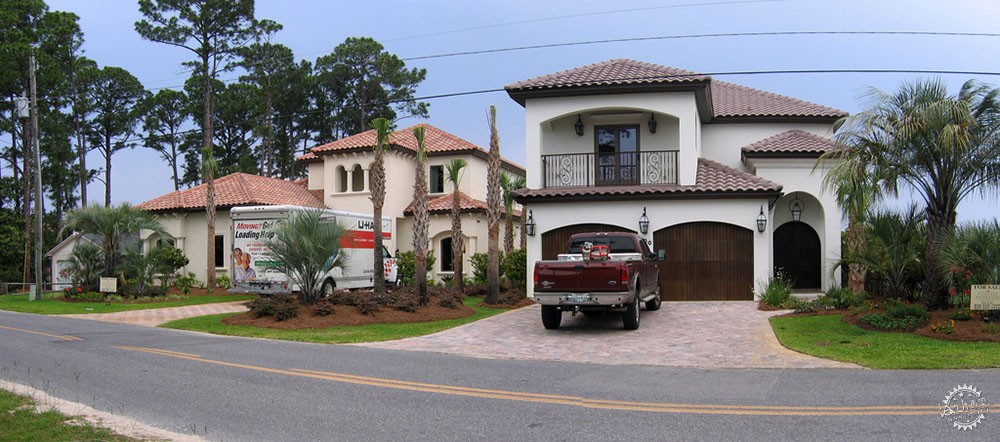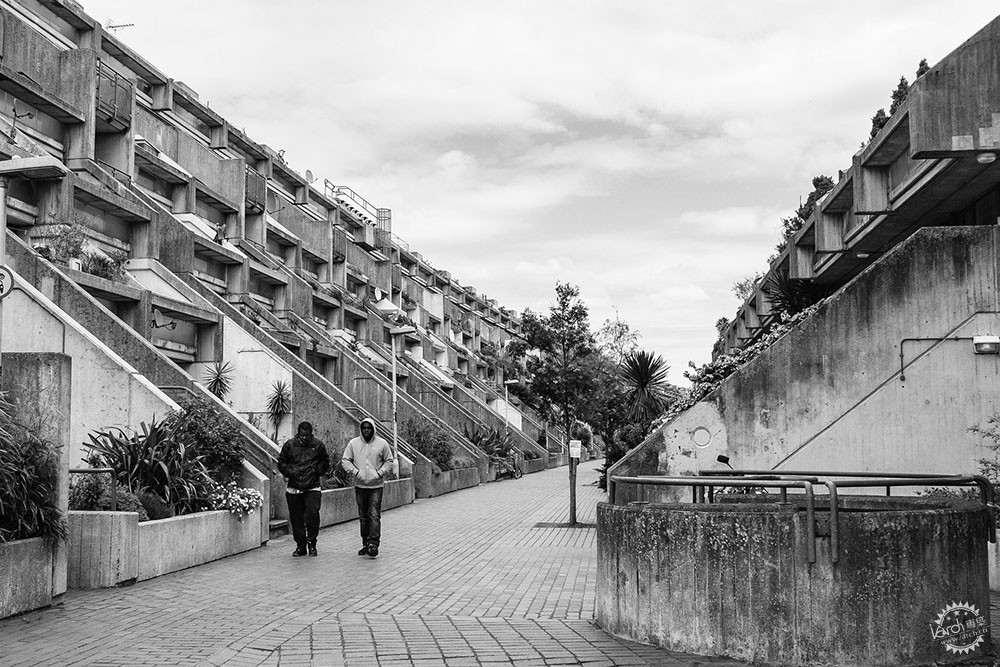
Image© EFE
建筑与评论:取之于民,为之于民?
Architecture and Criticism: By the People, for the People?
由专筑网李韧,王帅编译
本文最初发表于“Common Edge”,标题为“建筑评论并非只针对建筑师”。
也许你已经注意到了,这个世界已经从纸质媒体转向电子媒介,正如你现在正在阅读的这篇文章,世界的一切都在发生转变,其中当然也包括我们对于建筑的评论与思考方式。
近期,一篇文章向人们展示了非新闻媒介对于建筑评论的影响,以及人们对于其中的期望。几周之前,博客“McMansion Hell”的创始人、同时兼“Common Edge”的拟稿人Kate Wagner,为Vox.Com写了一篇文章,文章关于Betsy DeVos位于密歇根州的夏日别墅。这篇文章在网上引起了轰动。
她提及那座看起来臃肿的建筑,这无疑是在表达建筑通过外观而引人注意的特征,同时也表达了对于DeVos和政府的鄙夷。相比起对于有钱人们McMansion审美趣味的贬低,Wagner的文章还表达了对于Resist运动的文化愤慨,这项运动完全符合促进非建筑项目迅速发展的全面号召。
Paul Goldberger在数千条评论中写道:“@mcmansionhell给Betsy DeVos带来很大的打击,这表明了她是一位敏锐同时不失有趣的建筑评论家。”
这位文笔犀利的世界知名建筑评论家赋予Wagner“建筑评论家”的身份,她不仅仅是一位机智、有趣、个性的博主,同时她也通过直截了当的建筑分析来描述人们的当前文化。
在这次网络轰动之前,我在电台节目中采访了Wagner,我问她为什么人们都喜欢她的博客,她回答:“人们喜欢这个博客是因为博客内谈论建筑的方式并不常见,这虽然有些奇怪,但这就是个建筑博客。”
This article was originally published on Common Edge as "Architectural Criticism that's Not Just for Architects."
In case you hadn’t noticed the world is going from paper to pixels. You’re reading this, here. Everything is changing, and that includes how we talk and think and write about architecture.
A recent essay showed me the impact of how the not-so-new media has changed our sense of what architectural criticism—really any criticism—is and what we expect from it. A few weeks ago, Kate Wagner, creator of the wildly popular blog “McMansion Hell” and contributor to Common Edge, wrote a piece for Vox.Com on Betsy DeVos’ new summer home in Park Township, Michigan. The internet exploded.
Her send up of the bloated home had clear allusions to her disdain not only for excess and conspicuous consumption, but also for DeVos herself and by extension for the entire Trump Administration. Rather than simply decrying the aesthetic funkiness of a rich person’s McMansion, Wagner’s article was full-throated cultural outrage that surfed the energy of the Resist Movement—and its reception was in full accord with the many and growing non-architectural pieces that call out the Trump train wreck.
Amid the thousands of gleeful tweets and “comments” that followed, was one by Paul Goldberger: “@mcmansionhell brilliantly takes down Betsy DeVos, showing once again that she is one of our sharpest as well as most entertaining architecture critics.”
Arguably the world’s most famous architecture critic, who made his bones in print, conferred upon Wagner his own identity of “architecture critic” (on Twitter, of course). Not just a smart, funny, personal blogger, she is using architectural analysis to describe our greater culture, and doing so in an immediate, relatable voice.
That’s why I had Wagner on my radio show, “Home Page” before her most recent internet explosion, and asked her why people loved her blog: “I think people enjoy the blog because it’s talking about architecture in a way that is not patronizing, which is frankly not common. That might be a bit of a diss, but I am referring to the architecture blogs.”

Courtesy of Flickr User Andrew Guyton. ImageMcMansions such as these are among the types of buildings discussed on McMansion Hell
Wagner的呼声敏锐且充满智慧,这是新兴网络建筑评论最为明智的选择,你无需成为AIA成员,就能够每天接受相关文章、图片,以及项目。在曾经,建筑印刷杂志层出不穷,但在如今,只有少数仍然得以保存。人们主要以大量的网络信息为主要的资源收集来源,当前的世界与以往的纸质媒体截然不同,同时,过往的建筑评论也较为晦涩难懂,虽然针对性但更加学术专业一些。
我常常在“ArchDaily”中发表文章,同时也为“Archinect”、“ HOUZZ”以及一些小型网络平台进行写作。在网络中,瞬时反应和极端情绪的传递非常迅速,网友们在评论时并没有过多的思考,时而赞颂时而贬低。也许你不相信,但这确实是社会的进步。
近年来,这种表达方式强调了网络对于人们思考与评论建筑方式的影响,这些评论完全公诸于大众,并且具有时效性与修正性,网络信息实时存在,同时有着高度可得性。
Wagner嘲讽了DeVos住宅的粗俗不堪,同时也表达了当时的怪诞风格,另外还暗示了施工方的腐败。其作品的反应有些超过建筑评论的范畴,并且揭示了建筑消极的一面,其中还包含有除了建筑美学之外的大量分享与评论,这些言语对于Wagner的观点也是一种传播。总的来说,建筑评论超出了建筑学领域。
这种对建筑的广泛感知不仅局限在美学范围内,这些信息在网络中呈现爆炸形态。但不仅仅是Wagner,许多博客与网站都时刻关注着诸如野兽派建筑文化意识形态。在这些领域,建筑学观点与任何建筑美学特征几乎相同。诸如#SOSBRUTALISM、Fuck Yeah Brutalism等野兽派主义网站正如“McMansion Hell”一样具有消极效应。这些博客包含有推崇野兽派主义的普遍意图与社会愿景,同时也十分怀念那些非建筑人眼中的失败建筑。
Wagner’s voice is sharp, witty and among the brightest of this emergent internet-based architecture criticism. You don’t need to be a member of the AIA to receive hundreds of articles, images, and projects a day. Once there were half a dozen pre-eminent architecture print magazines, now the few left are struggling to stay alive on paper while scores of web presences make the scrolled review of images on a device the norm. This new world is in contrast to the longer paper screeds of the past, often filled with arcane and impenetrable critical writing, geared to the narrow field of architectural academics.
I am published regularly in ArchDaily; wrote for Archinect and HOUZZ before that, and any number of smaller venues. The instant response and mass love/hate or indifference (easily the worst of the three) of the Internet is quick and intense. The comments are unedited and often dazzling in either their brilliance or addled incoherence. This is, believe it or not, a clear virtue.
This recent torrent of expression highlighted how the Internet has transformed the way we exchange architectural thoughts and responses. Universal, instant, fully revisable, everything on the Internet is in real time and essentially free (a problem for another day’s discussion).
In clubbing the baby seal of obvious excess, Wagner mocks the gross in the DeVos house but shows how the overblown can also be grotesque because it reveals the venality of its builder. The reaction to her piece went beyond a critic revealing the negative truth about a building—it was a mass wave of likes, shares, comments, and retweets that flamed and trolled on everything Wagner addressed, not just the aesthetics of the home. It was architecture criticism that transcended architecture.
This wider perception of buildings goes beyond aesthetics, and it’s what explodes on the Internet. But it is not just Wagner; there is a wave of blogs and websites focusing on Brutalism as an architectural expression of cultural ideology. In these sites architecture evidences a worldview as much as the specific aesthetics of any building. Brutalist websites, such as #SOSBRUTALISM and “Fuck Yeah Brutalism” are as positive as “McMansion Hell” is negative. These blogs embrace the universal intentions and social vision that spawned Brutalism, and are almost nostalgic in their glowing regard for buildings that most civilians (i.e. non architects) believe failed miserably.

Courtesy of Flickr User ádám Szedlák. ImageThe Alexandra Road Estate by architect Neave Brown; an example of London's brutalist architecture.
网络时代的建筑评论常常让我回想起后现代主义,在当时Vincent Scully、Robert Venturi、 Denise Scott Brown、Tom Wolfe所著的书中,作者们以敏锐的洞察力分析了当前的现状。后现代主义受限于自身的荒谬,但这些建筑师们对高层建筑的评论不仅让人耳目一新,同时也具有挑衅性,除此之外还表达了上世纪60年代“拒绝权威”的反文化信息。
有人认为,后现代主义的审美作品有些肤浅,而就我而言,其影响力以评论为基础。由于世界中世纪的文化革新,该流派辉煌了几十年。我相信,相比起包含建筑评论在内的新兴技术对于整个行业的影响趋势,后现代主义的异军突起只是清风拂面。
也许这种全新评论正处于发展时期,瞬时的快乐、无限的实时表达、通用性、即时纠错特征都是很好的交流方式。但是,实时现场、图片、视频,以及新闻等表达方式也为传统纸媒赋予了奇特的体验。
这些即将来临的改变并不在于会产生什么样的结果,而形成改变的方法才是最终的成果。为了合作演唱,当前的文化似乎否定了Gilbert & Sullivan八个部分的和谐韵律,这反应了这样一个事实,即音乐创作对于乐谱阅读能力的需求逐渐降低。音乐通过几种方式谱写而成,但是当前的方式则是直接将脑海中的旋律直接谱写出来。
建筑印刷媒介的美与谨慎的丢失对于人们来说是一个损失,我对这种损失感到遗憾。成熟的观点、框定文本的“豆腐块”、目标明晰的照片和图像仍然存在,但是就如同传统绘画一样,这种纸媒似乎没有了过多的发展空间。而诸如“McMansion Hell”的趣味和沟通方式也许不会成为未来建筑评论所遵循的策略,但少数的印刷作品仍然会受人喜爱,而建筑媒体的数字化必将改变当前的建筑评论方式。
也许分析与评论之间的界限非常模糊,建筑评论也如新闻自身那样逐渐演变为对话与沟通的场所,而不是单纯地对印刷制品进行纠错分析。
在多年以前,Marshall McLuhan曾经说过:“媒体就是信息。”事实上,如今那些对于诸如“McMansion Hell”等场所做出观察、反应,以及思考的人群,已经不再是20年前“Architectural Record”的粉丝了。
这大概是一件好事。
This new era of internet criticism reminds me of Postmodernism, when books by Vincent Scully, Robert Venturi and Denise Scott Brown and Tom Wolfe ripped the existing status quo with insight and wit. Postmodernism was crib-killed or committed suicide by its own absurdities, but its alt-architecture criticism was refreshing, provocative and expressed the 1960’s counterculture message of “Reject Authority.”
Some say the aesthetic product of Post Modernism was shallow at best. To me its reactionary impact was based in commentary. It burned bright for a couple of decades because of its place as part of the worldwide cultural revolution of the mid-century. I believe that upheaval will considered a tiny ripple when it’s compared to what emerging technology portends for our profession—and that includes criticism.
Maybe this new criticism is just in its awkward adolescence. The joy of instant, real time presentation of unlimited length, universal availability and immediate correction of error, is a fantastic way to communicate. But the ability to link to live sites, images, video, and news makes the indirect page-bound world of traditional journalism quaintly tactile.
These coming changes are not just about what is produced. Ultimately the methods of creation change what is what is created. Current culture is rejecting Gilbert & Sullivan eight-part harmony in favor of a cappella singing; reflecting the fact that the ability to read sheet music is vanishing from the creation of music. Music is made in several ways, but the ear to mouth of a cappella is defeating the mind-to-hand of making music off paper.
Losing the beauty and circumspection of print architectural journalism will be a loss, a loss I feel with each missing newsstand. Fully formed arguments, paper-framed in a bound context, with targeted photos and other graphics, still exist, but like “drawing” it’s a dead-method-walking. Of course the fun and conversational tone of “McMansion Hell” may not the way that all future criticism will follow, but the few remaining print magazines will, finally, become beloved footnotes and the burgeoning digital formats of architectural journalism will change architectural criticism far beyond what we see now.
Perhaps the line between analysis and commentary is blurring. Perhaps architectural criticism, like journalism itself, is evolving into a place of dialogue and reaction rather than the attempts at intellectual analysis of the print era.
Four generations ago Marshall McLuhan famously said “The medium is the message.” It’s clear that the millions today engaged in seeing, reacting to and thinking about architecture in all the places like “McMansion Hell” were not part of Architectural Record’s audience 20 years ago.
And maybe that is a good thing.
|
|
